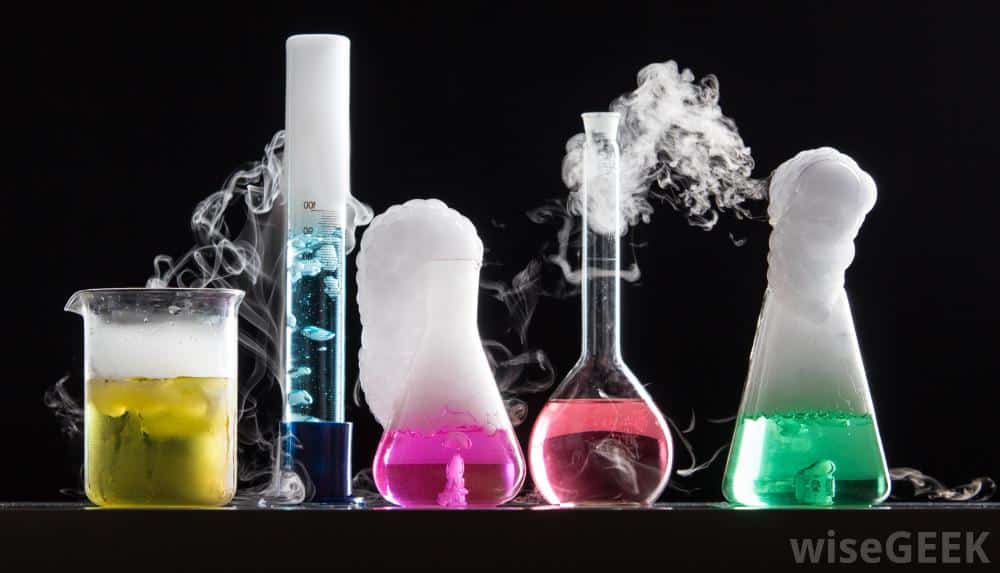Graphene From Carbon Based Waste – Flash Graphene Process
The Rice University lab chemist James Tour introduced a new process that can make any source of carbon turn into valuable graphene flakes. The new technique named “flash graphene” is cheap and quick and can convert a ton of food waste, plastic, or coal into graphene for a fraction of cost used by other bulk graphene-producing methods.
This new technique could be a solution to a large amount of food and plastic waste being thrown out. Any carbon based matter, including plastic waste, rubber tires, food waste, petroleum coke, biochar, wood clippings, coal, etc. can be turned into graphene using this method.
Heating carbon containing materials to 3,000 Kelvin (about 5,000 degrees Fahrenheit) turn them to graphene in just ten milliseconds. Graphene costs $67,000 to $200,000 per ton currently.
Even 0.1% of flash graphene in the cement used to bind concrete could reduce the massive environmental effects of cement by one third. As much as 8% of human-made carbon dioxide is emitted every year during the production of cement.
Concrete can be strengthened, and its use in buildings can be reduced by mixing graphene in
cement. By converting the carbon in food waste to graphene and adding that to concrete helps to tackle the carbon dioxide and methane that waste food would have generated as well as reduce the carbon dioxide emitted during concrete manufacture.The key to the circular economy is “Turning trash to treasure.” “Here, graphene acts both as a 2D template and a reinforcing agent that controls cement hydration and subsequent strength development,” said co-corresponding author Rouzbeh Shahsavari, an adjunct assistant professor of civil and environmental engineering and of materials science and nanoengineering at Rice and president of C-Crete Technologies.
Graphene has been too expensive to use in such applications before, but this new flash process will lessen the price and also help in managing waste. The graphene from the flash process can be used in concrete, buildings, asphalt, clothing, cars, etc.
The process will fix the carbon preventing its entry to the atmosphere.
Lead author Duy Luong and a graduate student at Rice improved techniques that required more effort and cost to produce just a little graphene, like chemical vapor deposition on a metal foil and exfoliation from graphite to develop the flash Joule heating method that converts carbon based waste to graphene.
“Turbostratic” graphene with misaligned layers that are easy to separate is produced, which makes the method even better. The graphene produced from other processes like the exfoliation of graphite is very hard to separate. Since the adhesion between layers in turbostratic graphene is much lower, its easier to work. They just come apart upon blending in composites or in solution.
Pristine single-layer sheets of graphene were also produced from used coffee grounds.
The custom-designed reactor in which the flash process happens, materials are heated quickly, and all noncarbon elements are emitted as gas. The reactor can be modified in the future to trap valuable elements like oxygen and nitrogen
The flash process channels almost all the energy into the target, producing very less excess heat. It is even safe to touch the container after a few seconds. Even if the reactor is three times hotter than the chemical vapor deposition furnaces used to make graphene before, the heat will only be concentrated in the carbon material. Its a super clean process as all the excess energy comes out as light in a very bright flash.
This work was inspired by a Science paper that talks about flash Joule heating to make phase-changing nanoparticles of metals.
Tour is starting a project which is funded the Department of Energy to convert U.S.-sourced coal, and he hopes to produce one kilogram of graphene per day from carbon-based wastes for two years.
The Department of Energy and a start-up company Universal Matter Ltd is funding Tour to scale up the flash graphene process.















































